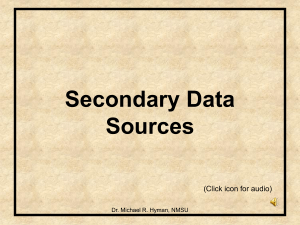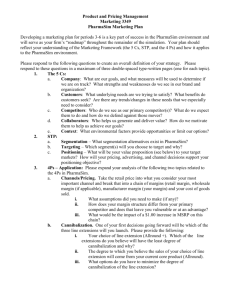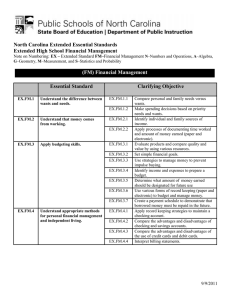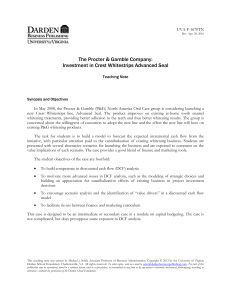Experiments in Marketing Research: Part II (Click icon for audio)
advertisement
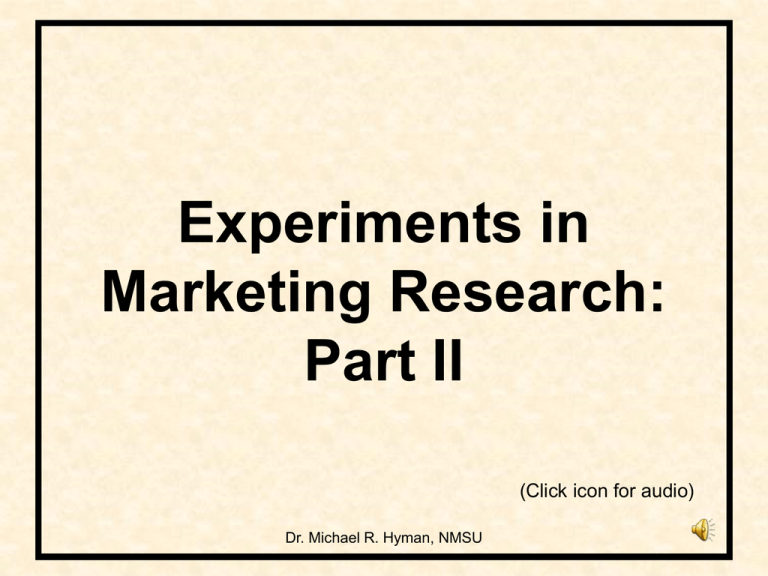
Experiments in Marketing Research: Part II (Click icon for audio) Dr. Michael R. Hyman, NMSU Sample Marketing Experiments Using Different Experimental Designs 2 3 4 5 6 7 8 9 Test Marketing 10 Test Market Field test of a new product or marketing mix element(s) of a current product using experimental or quasi-experimental designs 11 Uses and Objectives • Estimate market shares and volumes • Estimate cannibalization rate on existing product line • Collect classification data on potential customers • Analyze competitor reactions 12 Benefits and Disadvantages Benefits • Estimate sales potential under realistic conditions • Find and correct weaknesses in marketing mix Disadvantages • Costs • Tipping hand to competitors 13 What to Consider • Tradeoff of costs and risk of product failure versus potential profits and probability of success • Speed of competitor response • Cost to produce product for test market • Impact of failure on company reputation 14 Cost of Two-Market Test Direct costs: $500,000 • POP materials, coupons, samples, syndicated research, media time/space, ad agency payments, initially high trade allowances Indirect costs • Management time, diversion from current products, negative internal/external impact of test failure, etc. 15 Steps in Test Market Study 1. Define objectives • • Estimate market share, purchase frequency, cannibalization rates Discover who buys product and where 2. Select testing approach • • • Standard Simulated (mall testing facility) Controlled test market (e.g., BehaviorScan) 16 Steps in Test Market Study 3. Develop marketing plan 4. Select test markets • • Should reflect regional differences if important, but have similar demographics and little media spillover from/to other markets Avoid over-tested and idiosyncratic markets 17 18 Steps in Test Market Study 5. Run test markets • Sales estimates take 6-12 months because initial estimates of repeat purchases high 6. Analyze results • Check purchase data (i.e., trial versus repeat purchases), awareness data, competitive response, and sales of all similar products 19 Recap • • • • • • • Criteria for causality Basic definitions Importance of control Field vs. laboratory experiments Internal validity and threats to it Examples of marketing experiments Test markets 20
